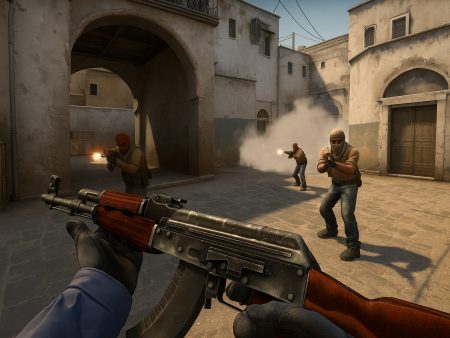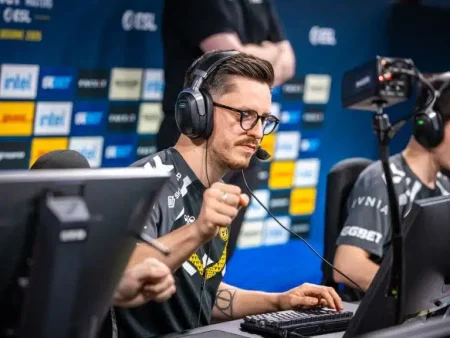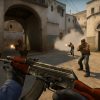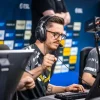Master the CS2 ranking system in 2025 with our ultimate guide. Learn how Elo works, understand all 18 ranks, and discover pro tips to climb fast. Perfect for beginners and aspiring Global Elites!
What is CS2 Ranked Play?
If you’re diving into Counter-Strike 2 (CS2) ranked mode, you’re entering one of the most competitive online gaming ecosystems on the planet. Unlike casual matches, ranked play in CS2 is where every shot counts, every round matters, and your skill level is tracked in the form of ranks and Elo. In essence, CS2 ranked is Valve’s matchmaking system designed to place players into skill brackets and encourage progression.
So what makes ranked so important? For starters, it’s a way to match players of similar abilities. You don’t want to be the only beginner among elite sharpshooters, right? Ranked gives you a clear sense of where you stand in terms of skill, and it’s designed to match you with opponents and teammates who are (in theory) on your level. That competitive tension is exactly what makes the CS experience so addictive.
Also, ranked play brings structure. You’re no longer just playing to kill time—you’re playing to climb, to improve, to prove yourself. Every win moves you forward, and every loss can knock you back. It’s part science, part psychology, and all skill.
Differences Between CS:GO and CS2 Ranking Systems
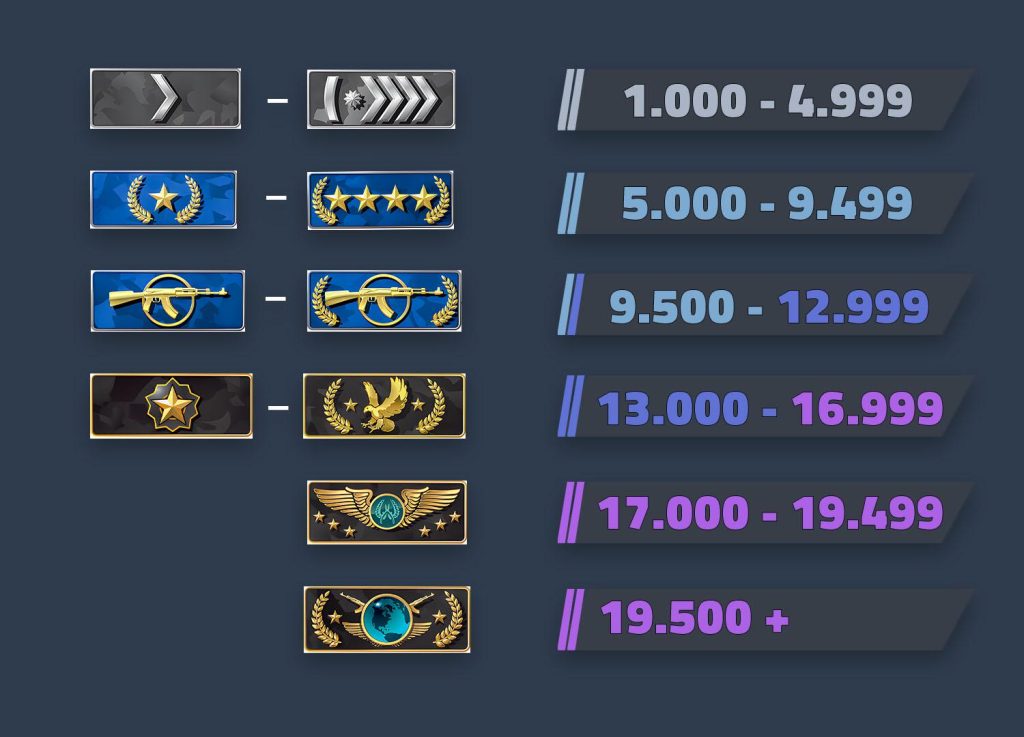
When CS2 dropped as the sequel to CS:GO, one of the biggest changes was how the ranking system worked. CS:GO used a very familiar and long-standing 18-rank tier system, but CS2 decided to shake things up by introducing map-specific ranks. That’s right—you now have a different Elo or MMR on each map.
This change was controversial but innovative. In CS:GO, your performance across all maps would collectively determine your rank. In CS2, you can be Silver on Mirage but Global Elite on Inferno, depending on how well you play on each specific battleground. This means mastering a single map can skyrocket your rank there, even if you struggle on others.
Another significant shift is transparency. Valve still doesn’t publicly show the exact Elo or MMR number behind your rank, but it’s more dynamic now. Rank updates are more frequent, and map-specific performance matters more than ever before.
Lastly, the CS2 matchmaking system relies more heavily on statistical analysis and game impact. It’s not just about kills anymore. Damage, assists, utility usage, bomb plants/defuses—all of it factors into your Elo, which means support players finally get some love in the ranking algorithm.
Understanding CS2 Ranks and Elo System
How CS2 Rank Tiers Work
In CS2, the rank tiers still exist—but they’re now tied to each map individually. Valve retained the same rank icons and names from CS:GO, which includes:
- Silver I to Silver Elite Master (S1 to SEM)
- Gold Nova I to Gold Nova Master (GN1 to GNM)
- Master Guardian I to Master Guardian Elite (MG1 to MGE)
- Distinguished Master Guardian (DMG)
- Legendary Eagle (LE)
- Legendary Eagle Master (LEM)
- Supreme Master First Class (SMFC)
- Global Elite (GE)
This structure allows for a smooth learning curve. Beginners start in the Silver or Gold Nova range and gradually climb as they improve. But what’s different in CS2 is that these ranks are now map-specific. So if you’re a Dust II god but can’t navigate Vertigo, your ranks will reflect that individually.
This creates a more granular matchmaking experience. You’re no longer punished for being weak on maps you rarely play. Instead, you can focus on improving one map at a time.
Also, it’s worth mentioning that your rank is affected by recent performance more than ever before. If you go on a win streak, you might rank up faster than in CS:GO. But if you go inactive, your rank might decay, forcing you to recalibrate with fresh matches.
What is Elo in CS2 and How It’s Calculated?
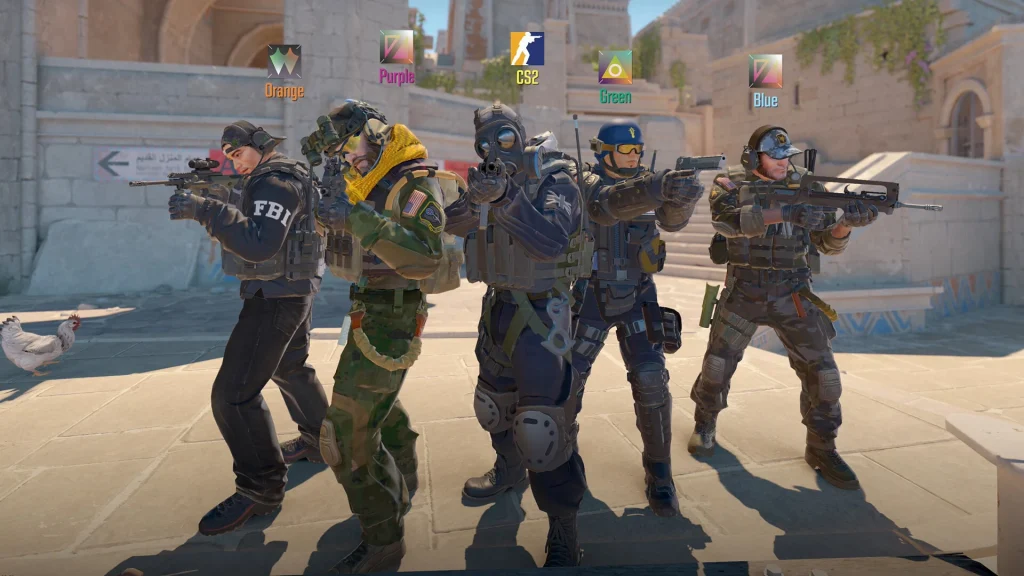
Elo in CS2 is a hidden numerical value assigned to your performance in matchmaking. It’s not visible to players (unlike in games like Valorant), but it determines who you’re matched against and how your rank changes after each match.
Here’s what we do know about how Elo is calculated:
- Win/Loss Matters Most: Winning games is still the biggest factor in gaining Elo.
- Individual Performance Counts: Your score, K/D ratio, MVPs, utility usage, bomb plants/defuses, and more affect how much Elo you gain or lose.
- Matchmaking Balance: Beating stronger opponents grants more Elo, while losing to weaker ones costs you more.
- Round Differential: Winning 16–3 earns you more Elo than a close 16–14 victory.
- Streak Impact: Consistent performance over time (win streaks or loss streaks) amplifies Elo gain or loss.
What’s sneaky about CS2 is that you could win a match and still gain very little Elo if you performed poorly or the enemy team had a lower average Elo.
Likewise, you might lose but still gain Elo or stay neutral if you carried your team and fought against higher-rated opponents.
Hidden MMR: What You Don’t See Behind Your Rank
Your displayed rank in CS2 is only the surface-level representation of your actual MMR (Matchmaking Rating), which is the true measure of your skill. This hidden number fluctuates with every match you play—even if your visible rank doesn’t change.
Think of your MMR like a balloon. Every match inflates or deflates it slightly, and once the balloon hits a certain threshold, your visible rank pops up to match it. That’s why you can go on a win streak without ranking up, or lose once and suddenly derank—it’s all about where your hidden MMR sits relative to the threshold.
This also explains the phenomenon of “hardstuck” players. You might feel like you’re winning games but not progressing. That’s likely because your individual performance isn’t strong enough to move the MMR needle significantly, or because you’re winning against lower-Elo players.
Understanding that there’s more under the hood helps you focus on consistency, not just rank jumps. Play smart, contribute in every round, and your MMR will reflect that even if your rank takes a while to catch up.
Full List of CS2 Ranks Explained
Complete Breakdown of All 18 Ranks
In CS2, the 18 ranks from CS:GO have carried over, each representing a different skill level, from absolute beginners to professional-tier players. Here’s a quick overview of what each rank typically means:
Silver Ranks (S1 to SEM)
These ranks are where most new players begin. Players here are still learning the basics like aim, movement, and utility. Matchmaking in these ranks can be chaotic—expect teammates rushing B every round and not buying armor.
- Silver I (S1): The true starting point; players are usually brand new.
- Silver II (S2) to Silver IV (S4): Players start to understand spray patterns and map callouts.
- Silver Elite (SE) to Silver Elite Master (SEM): These players have basic mechanical skills but still struggle with game sense and teamwork.
Gold Nova Ranks (GN1 to GNM)
This is the largest chunk of the player base and where the gameplay begins to feel a bit more strategic.
- Gold Nova I (GN1) to Gold Nova III (GN3): Players understand maps, eco rounds, and basic team tactics.
- Gold Nova Master (GNM): The bridge between casual and competitive gameplay; players here can aim and use smokes effectively.
Master Guardian Ranks (MG1 to MGE)
Here, players are confident with their mechanics and team communication. This is where competitive play becomes more structured.
- Master Guardian I (MG1) & II (MG2): Decent aimers with some knowledge of rotations, counter-strafing, and utility setups.
- Master Guardian Elite (MGE): Better at holding angles and peeking smartly; most smokes are thrown with purpose.
DMG to Global Elite (The Elite Tier)
This is where real skill starts to separate casual gamers from semi-pros.
- Distinguished Master Guardian (DMG): Highly skilled players with great awareness and consistency.
- Legendary Eagle (LE) & Legendary Eagle Master (LEM): Tactical masters who understand map control, fakes, and reading the enemy.
- Supreme Master First Class (SMFC): Near-pro level aim and strategy.
- Global Elite (GE): The highest rank—home to CS gods, semi-pros, and some pro players grinding ranked.
Each rank progression demands improvements in aim, movement, communication, utility usage, and mental fortitude. And now with map-specific ranks in CS2, you could be DMG on Inferno and still be stuck in Nova on Overpass. It rewards map mastery, not just general CS skill.
How Placement Matches Determine Your Starting Rank
When you first hop into CS2’s ranked mode, you’ll need to play placement matches. Think of these as the system’s way of measuring your skill before assigning a starting rank on each map.
Here’s how it typically works:
- You need to win a set number of matches on a specific map to unlock your rank for that map.
- Your performance in these matches—not just win/loss—affects the outcome. So even if you lose, but top frag and play smart, you’re likely to place higher.
- Valve uses your CS:GO rank as a baseline, but it’s not always accurate. Many former Global Elites have been placed in MG or Nova ranks in CS2 due to the different matchmaking algorithm.
The key is to treat every placement match like a tryout. Focus on good communication, using utility, not dying needlessly, and clutching rounds when possible. Each action counts more than you think.
Also, remember that CS2 ranks are map-specific. So, you’ll need to do placements on each map individually to get ranked on them all. This might feel grindy, but it ensures players aren’t over-ranked on maps they barely know.
Why Rank Distribution Matters
Rank distribution refers to how the player base is spread across the different ranks. This matters more than people realize, especially for those who feel “stuck” in a certain rank.
Here’s why it’s important:
- Most players are clustered in the middle, especially in Gold Nova and low MG. This means your chances of being matched with unpredictable players—AFKers, trolls, smurfs—are higher.
- Higher ranks like LEM, SMFC, and Global Elite represent only a tiny portion of the player base. That means climbing gets exponentially harder the higher you go.
- Matchmaking can feel inconsistent in ranks with wide skill variance (e.g., Gold Nova), where some players are rising fast while others are being carried.
Valve tries to keep a balanced distribution to ensure a healthy competitive ecosystem. But understanding where you fall can help manage expectations. If you’re Gold Nova III, you’re already better than over 50% of CS2 players. So don’t beat yourself up!
How to Improve Your Rank in CS2
Gameplay Fundamentals to Master
If you want to climb the CS2 ladder, there’s no shortcut—you have to master the basics. Whether you’re Silver or LEM, fundamentals like crosshair placement, movement, economy management, and communication are the pillars of success.
Let’s break them down:
1. Crosshair Placement
Always aim where the enemy’s head is likely to be. It sounds simple, but bad crosshair placement is one of the biggest reasons people miss shots. Keep it at head level, not the floor or sky. Pre-aim common angles, and you’ll win more duels instantly.
2. Movement and Counter-Strafing
Standing still gives you pinpoint accuracy. Learn to counter-strafe—tapping the opposite movement key to stop immediately before shooting. Walking and shooting = inaccuracy and death. Master this, and your aim improves drastically.
3. Economy Awareness
Buying every round is a rookie mistake. Understand when to eco (save), force buy, or go for a full buy. Learning the CS2 economy system will help your team survive longer and win more rounds.
4. Map Awareness
Keep an eye on the mini-map. Always know where your teammates are and what areas are covered. Rotate smartly, and don’t chase kills across the map. Holding your site can win rounds.
5. Communication
You don’t need to talk like an IGL (In-Game Leader), but calling out enemies, flashing, and alerting for rotates can change the match. Use clear, concise comms. No need for “uhhh” or “I think”—just say “One mid, pushing cat.”
Mastering these fundamentals alone can get you out of Silver, through Nova, and even to MG if you’re consistent. It’s not flashy, but it’s effective.
Utility Usage and Team Play
Grenades are your best friend in CS2, yet most players underuse them. Flashbangs, smokes, molotovs, and HE grenades are not just tools—they’re tactical weapons that win rounds.
Here’s what good utility usage looks like:
- Smokes block vision. Use them to cut off snipers, delay pushes, or fake rotations.
- Flashes are round-changers. Flash for your teammates or blind enemies before peeking.
- Molotovs deny space. Mollying common corners, plant spots, or entry points can isolate enemies or flush them out.
- HE Grenades can chip away at enemies rushing chokepoints or stacking behind smokes.
Team play goes hand-in-hand with utility. Instead of solo pushing, coordinate attacks. “Flash me out A,” or “Double peek short” are simple calls that drastically increase your odds of winning.
Playing off each other’s utility is what separates mid-rank players from the elite. If you’re solo queuing, even typing “flashing mid” before tossing a pop-flash helps. Small coordination can win huge rounds.
Practicing Aim and Mechanics Effectively
Let’s be real—you’re not getting to Global Elite without good aim. But spamming deathmatch for hours won’t help if you’re not practicing the right way.
Here’s how to make your aim practice count:
- Start with Aim Trainers: Tools like Aim Lab or Kovaak’s can help build muscle memory.
- Use CS2 Workshop Maps: Maps like “Aim Botz” and “training_aim_csgo” (ported over to CS2) are excellent for tracking and flicking.
- Set Routines: Do 15–30 minutes of daily aim practice before jumping into ranked. Focus on consistency, not speed.
- Deathmatch Smartly: Don’t just run and gun. Practice crosshair placement, burst fire, and controlling recoil in live scenarios.
Also, take care of your gear. Use a comfortable sensitivity (most pros use between 1.5 and 2.5 @ 400 DPI), find a mouse that fits your hand, and make sure your monitor has low input lag.
Smart Strategies for Climbing the CS2 Ladder
Role Specialization and Communication
One of the most underrated aspects of ranked play in CS2 is understanding your role within a team. Not everyone can be the top-fragger or the AWP god—but every player can be a specialist. By knowing your strengths and fitting into a team-based role, you’ll win more games and climb faster.
Let’s look at a few common roles in CS2:
- Entry Fragger: Leads the charge and clears angles. Needs fast reflexes and good decision-making.
- Support: Throws the right utility, flashes teammates in, smokes angles, and molotovs off common spots. Often sacrifices their position for team success.
- AWPer: The sniper. Must have precise aim and know when to rotate or hold angles.
- Lurker: Plays away from the team, gets behind enemy lines, or finds flanks. Needs game sense and timing.
- In-Game Leader (IGL): The brain of the operation. Calls strats, rotates, and keeps team morale in check.
By choosing a role and sticking with it, you’ll become more consistent in your impact. You don’t have to be the MVP every match—just be the teammate who knows how to play their part well.
On the flip side, communication is what ties all roles together. Even if you’re solo queuing, using your mic or quick binds for basic comms (“One pushing B apps,” “AWP long”) drastically increases your team’s effectiveness. If you don’t like using voice chat, at least use text commands like:
- “Eco this round.”
- “Stack A?”
- “I’ll smoke mid, you flash short.”
The more you communicate, the more likely your team works like a team—not five lone wolves.
Solo Queue vs. Team Queue: What’s Better?
The age-old CS question: is it better to solo queue or party up with friends? The answer depends on your goals and your mindset.
Solo Queue Pros:
- Improves individual performance and decision-making.
- Forces you to carry and communicate with strangers.
- No dependency on premade teammates—great for sharpening your own skills.
Solo Queue Cons:
- Inconsistent teammates.
- Toxicity, AFKers, and smurfs are more common.
- Less coordination and strategy.
Team Queue Pros:
- Better synergy, especially with people you trust.
- Can execute advanced strats, like double peeks and full executes.
- Less chance of trolling or AFK behavior.
Team Queue Cons:
- Sometimes creates bad habits (over-reliance on teammates).
- If you’re the weakest link, it can affect friendships.
- Queue times can be longer, especially in higher ranks.
If you’re serious about climbing efficiently, duo queue is the sweet spot. You’ll have at least one reliable partner while still relying on your own performance. Find a friend with a mic and similar rank, and you’ll reduce the chaos significantly.
Reading the Meta and Adapting Quickly
In CS2, like any competitive game, there’s always a meta—a set of strategies, weapons, and plays that are particularly effective at a given time. If you ignore the meta, you risk falling behind players who constantly adapt.
So what should you watch out for in the current CS2 meta?
- Popular Weapon Choices: Is the A1-S still dominant, or are more players shifting to the AK/M4A4? Weapon buffs/nerfs change the balance.
- New Smoke Mechanics: With CS2’s volumetric smokes, they can be manipulated or disrupted—smart players use this to their advantage.
- Grenade Trends: Are people using more pop-flashes or molotovs to deny early map control?
- Playstyles: Aggressive CT pushes or passive defaults on T side? The pros are doing it—so should you.
How do you stay ahead of the meta?
- Watch Pro Matches: Focus on decision-making and utility usage.
- Follow Patch Notes: Valve doesn’t always make huge changes, but even slight ones affect gameplay.
- Learn From Better Players: Streamers, coaches, or higher-ranked friends often spot trends early.
Adapting doesn’t mean copying blindly. It means understanding why something works—and how it fits your playstyle. Being flexible is one of the most important traits of high-Elo players.
Analyzing Your Gameplay Like a Pro
Reviewing Demos and Fixing Mistakes
Watching your own gameplay is one of the most powerful, yet underused, tools for improvement. If you’re not reviewing your matches, you’re likely repeating the same mistakes without realizing it.
Here’s how to analyze your CS2 demos like a pro:
Step 1: Focus on Losses
Start with games you lost. Watch them back and ask yourself:
- Did I peek unnecessarily?
- Was I out of position?
- Did I throw away a man advantage?
- How was my communication?
- Was I using utility at the right time?
Step 2: Pay Attention to Early Rounds
Many games are decided in the first few rounds. Did you lose pistol and force-buy poorly? Did you mismanage your eco rounds? Fixing these can prevent snowballing and improve win consistency.
Step 3: Watch Without Ego
Don’t justify bad plays with “I thought he was there” or “my team was bad.” Be honest. Accountability is key to improvement.
Step 4: Take Notes
Jot down common errors: wide-peeking without a flash, rotating too early, or holding an angle too long. These become your focus points for future practice.
Watching demos might feel tedious, but it’s like reviewing game tape in sports. Pros do it after almost every match—and so should you.
Tracking Your Stats and Progress
Improvement isn’t always about what you feel—it’s about what you can measure. Tracking your in-game stats helps you understand where you’re improving and what still needs work.
Here are tools and metrics to pay attention to:
- K/D Ratio: Not everything, but if it’s consistently low, it’s a red flag.
- ADR (Average Damage per Round): High ADR = consistent impact, even if you’re not top fragging.
- HS% (Headshot Percentage): Indicates aim quality. Aim for 40–60% as a good benchmark.
- Utility Usage: Flash assists, smokes thrown, and molotov damage show how smart your plays are.
- Win Rate per Map: Helps identify weak maps to practice or avoid.
You can use in-game stats, or external platforms like Scope.GG, Leetify, or CS2Demos.com to get detailed breakdowns of every match.
Tracking isn’t just about bragging rights—it’s about accountability. If your ADR is dropping, or your HS% is inconsistent, you know it’s time to hit the aim trainer again.
What to Avoid When Ranking Up in CS2
Common Mistakes That Hold You Back
Let’s be honest: most players don’t improve because they keep making the same avoidable mistakes. Whether you’re stuck in Gold Nova or struggling to break into Global Elite, eliminating these errors will give you a significant boost:
1. Over-Peeking
You might hit a couple of flashy shots early on, and suddenly you think you’re s1mple. So, you peek into three enemies with no flash, and boom—you’re dead. Over-peeking is the enemy of consistency. Use utility, jiggle peek, and work with teammates.
2. Not Checking Corners
It’s shocking how many deaths come from not clearing basic angles. Train yourself to systematically clear corners, especially on pistol rounds.
3. Ignoring Economy
Force buying every round or not coordinating with your team is a fast track to losing. Learn to eco when needed and buy together.
4. Playing Too Aggressively on CT Side
CS2 rewards smart aggression—not reckless pushes. You don’t always need to peek mid or rush B apps. Hold your angles and force the T-side to make mistakes.
5. Never Practicing
If your entire improvement strategy is “I’ll just play more,” you’re setting yourself up for a plateau. Practice your mechanics, utility, and mindset outside of ranked.
Fixing just one of these habits can elevate your gameplay overnight. The biggest key? Self-awareness. Stop blaming teammates and start focusing on what you can control.
How Tilt and Mindset Impact Performance
You can have world-class aim and game sense, but if your mindset is trash, your rank will be too.
Tilt—that frustrated, emotional state after a bad game or round—is a silent killer of Elo. It makes you play worse, communicate poorly, and spiral into bad decisions. Here’s how to stay composed:
- Recognize the Signs Early: If you’re sighing, typing angrily, or rushing recklessly—you’re tilted.
- Take Breaks: Don’t queue back-to-back after a loss streak. Even 10 minutes away can reset your mindset.
- Mute Toxic Teammates: If someone’s bringing negative energy, mute them and focus on your game.
- Positive Self-Talk: Instead of saying “I suck,” say “What can I do better next round?”
Mindset is 50% of the battle. CS2 is mentally demanding—handling losses and mistakes with a cool head is what separates good players from great ones.
Advanced Tips from High-Elo Players
How Pros Train for Ranked Matches
Professional CS players treat ranked games like mini-tournaments. They warm up, review strats, and even discuss game plans beforehand. You don’t have to be a pro to learn from their routines.
Here’s a sample training schedule used by many top-tier players:
- 30 Minutes Aim Practice: Start with flicks, tracking, and micro-adjustments.
- 15 Minutes Utility Practice: Learn key smokes, one-ways, and molotovs for specific maps.
- 10 Minutes Demo Review: Watch your last match or a pro demo for insights.
- 1-2 Warm-Up Games: Play a deathmatch or unranked game to get into rhythm.
Also, pros don’t tilt easily. They reset after losses and never blame others. Emulating that mindset will do more for your rank than any clutch highlight.
Using Third-Party Tools to Gain an Edge
There are several third-party platforms and tools that help players improve and optimize their CS2 experience. Here are some of the best:
- Leetify: Automatically analyzes your matches and breaks down stats like entry success rate, first-death % and utility usage.
- Scope.GG: Offers demo review tools, heatmaps, and even gives you “performance badges” to track improvements.
- CS2Demos.com: Great for storing and reviewing demos.
- Kovaak’s/Aim Lab: Build your raw aim and reaction speed outside the CS2 engine.
These tools turn your progress into data-driven insights, giving you clear goals instead of vague “just get better” advice.
Tools and Resources to Improve in CS2
Best Aim Trainers and Maps
If you’re looking to sharpen your mechanical skills, aim trainers and custom workshop maps are your best friends.
Top Aim Trainers:
- Aim Lab (Free on Steam): Great for flicks, tracking, and reaction time.
- Kovaak’s FPS Aim Trainer: More customizable and used by pros.
Top Workshop Maps in CS2:
- Aim Botz – Training: Practice flicks, headshots, and reflex aim.
- training_aim_csgo2: Ideal for precision aim and small target tracking.
- YPrac Maps: Offers detailed map-specific grenade practice.
Spending even 15–20 minutes a day on these tools can dramatically improve your consistency in ranked matches.
Watching Professional Matches for Learning
Sometimes the best way to get better is to watch those who are already the best. Pro matches are goldmines of strategy, positioning, and clutch mechanics.
Here’s what to focus on:
- How they use utility—Watch how top players set up takes and retakes.
- Crosshair placement—Notice how pros rarely adjust their aim.
- Economy management—Observe force buys, full buys, and eco strategies.
- Communication—If available, listen to team comms or post-match reviews.
Watching teams like NAVI, Vitality, or FaZe isn’t just entertainment—it’s an education.
Conclusion
Climbing the CS2 ranked ladder isn’t about luck—it’s about consistency, mindset, and learning from every match. Whether you’re grinding out of Silver or pushing for Global Elite, the path is the same: master the fundamentals, specialize in roles and maps, stay calm under pressure, and constantly look for ways to improve.
Remember, every lost round is a lesson. Every demo is feedback. And every victory is built on dozens of small smart plays.
So, the next time you load into ranked, don’t just play. Compete. Improve. And dominate.
FAQ
Should I Warm Up Before Every Match?
Absolutely. A quick 15–20 minute warm-up in Aim Botz or Deathmatch primes your reflexes and helps you enter matches focused and confident.
Is Playing One Map Better Than Rotating Several?
Yes. Due to CS2’s map-specific ranks, specializing on one or two maps lets you climb faster by mastering the details—utility, timings, and angles.
How Do I Stay Motivated After a Losing Streak?
Focus on improvement, not rank. Review demos, take breaks, and set small goals like “better utility usage” instead of “get to MG.”
Is It Worth Paying for a CS Coach?
If you’re serious about improvement, yes. A good coach can identify blind spots you might never see on your own. Many offer affordable sessions online.
Can I Reach Global Elite Without a Premade Team?
Yes—but it’s hard. You’ll need excellent individual skill, communication, and mental resilience. Duo queueing is the most efficient path for solo climbers.
